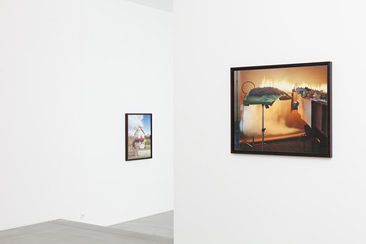Normally when we talk about an artist’s work blurring the line between photography and painting we are in the realm of photorealistic art, but French artist Philippe Cognée has spent the last 20 years coming up with something completely different. Cognée talks about his process as “thinning away the image”: beginning with a digital image (anything from a camcorder still to a cameraphone snap) he transfers them to canvas via a mixture of paint and wax. The two materials are combined, heated and crushed, which gives the paintings their opaque but shimmering quality. Through his practice, Cognée calls into question the role of painting in the digital age, in which every corner of the globe has been mapped and is available for all to view, albeit through a fog of long-lens distortion.
The prosaic locations of suburbia and the industrial outland are Cognée’s stomping grounds, where he searches for the vacant shops, the graffiti smothered buildings, the grim abattoirs and echoing garages. Occasionally though, Cognée treats himself to a trip to the seaside where his usually vacant scenes become packed with people. Are we any more clearly visible to each other at close quarters than we are through a satellite camera? Galerie Daniel Templon in Brussels is exhibiting Cognée’s Territoires series until 21 February.
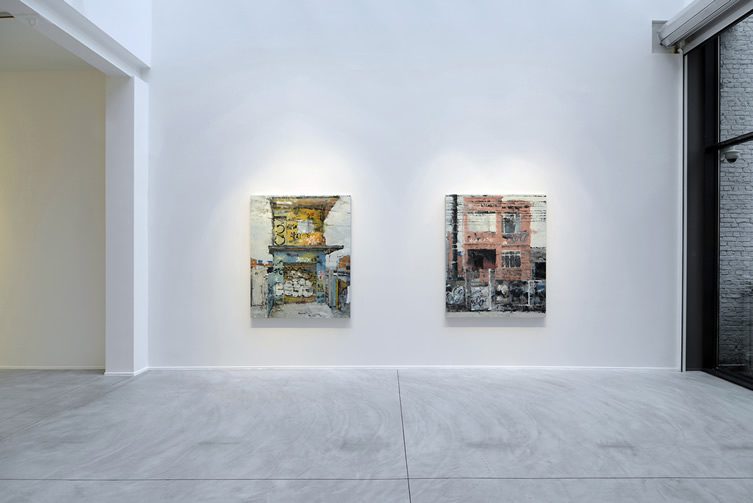
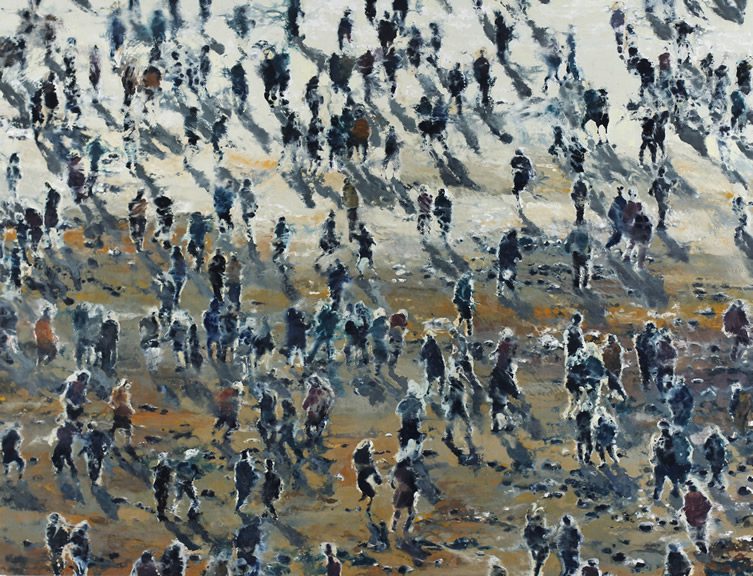
Foule au crépuscule, 2014
Peinture à la cire sur toile
[wax painting on canvas]
153 x 200 cm
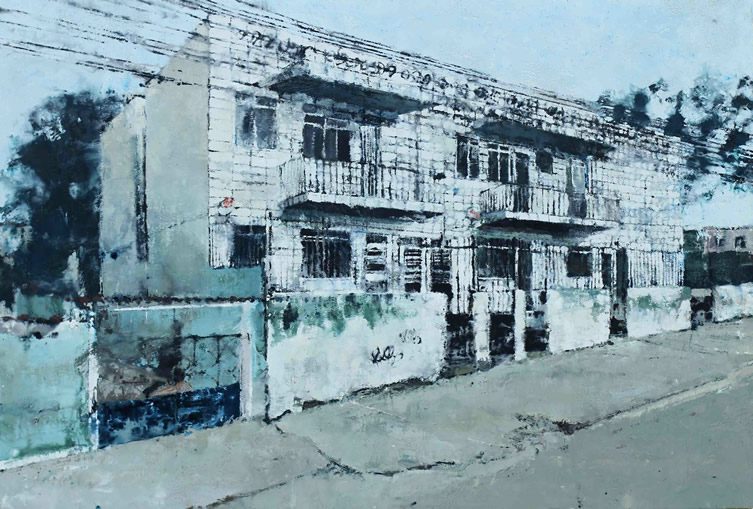
Maison à Brasilia I, 2013
Peinture à la cire sur toile
[wax painting on canvas]
153 x 225 cm
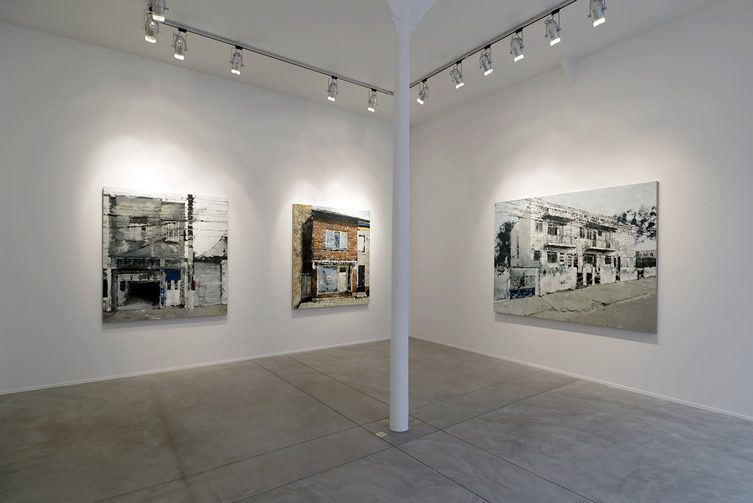
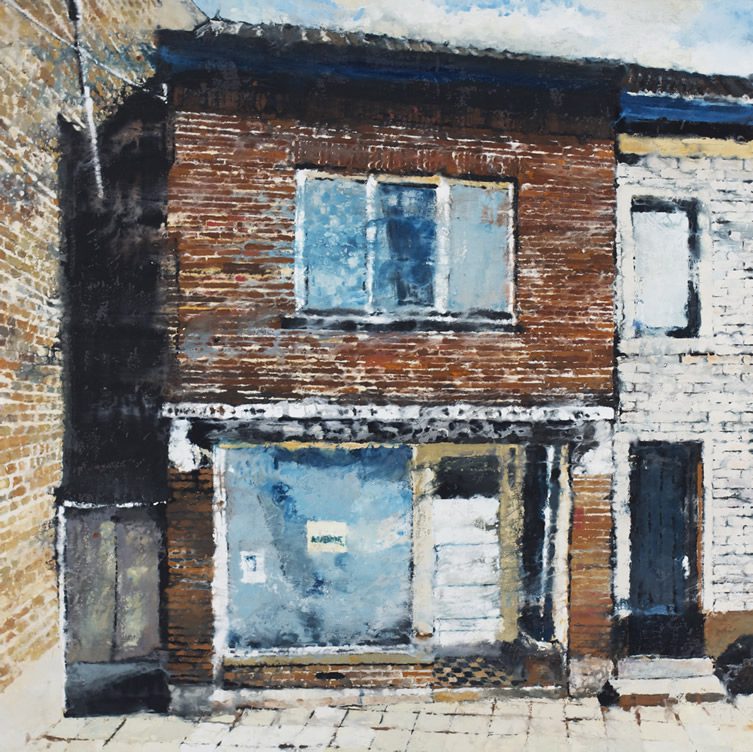
Pas de porte à vendre à Charleroi, 2014
Peinture à la cire sur toile
[wax painting on canvas]
153 x 153 cm
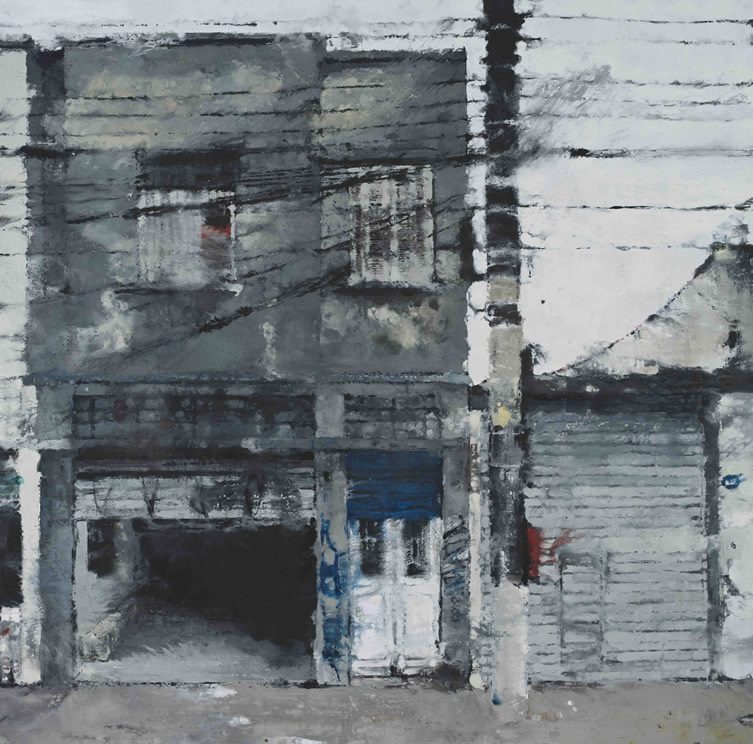
Maison à la porte bleue, 2014
Peinture à la cire sur toile
[wax painting on canvas]
153 x 153 cm
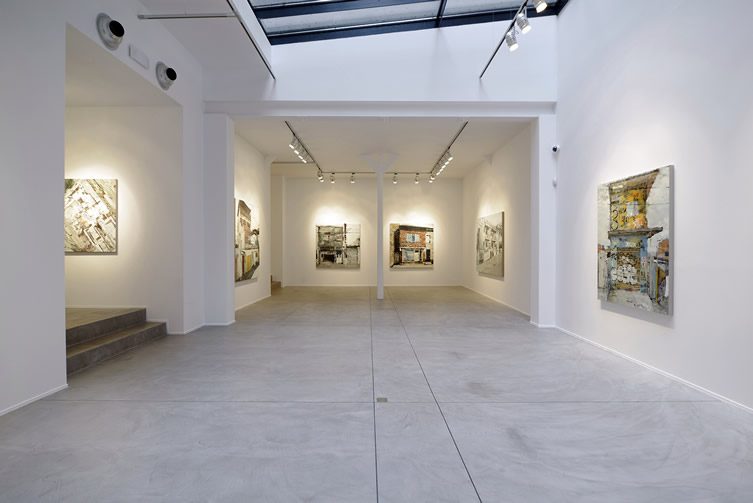
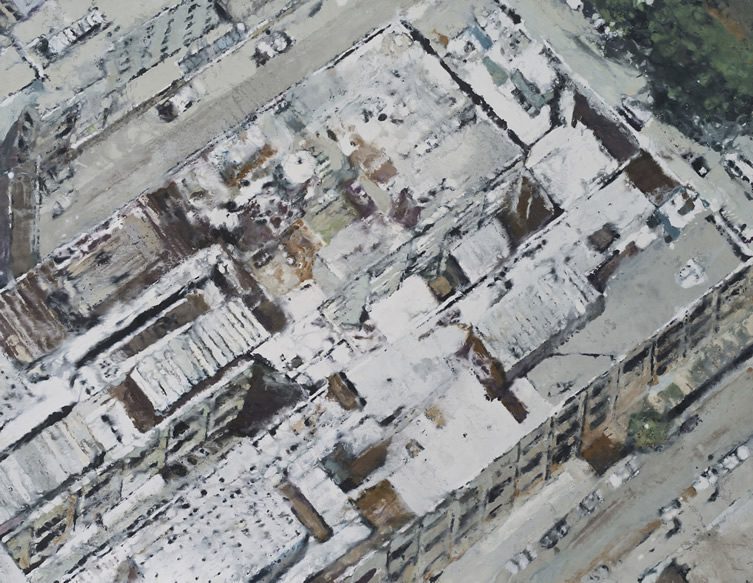
Goch (Elément 2/7 de “Puzzle”), 2014
Peinture à la cire sur toile
[wax painting on canvas]
85 x 110 cm




